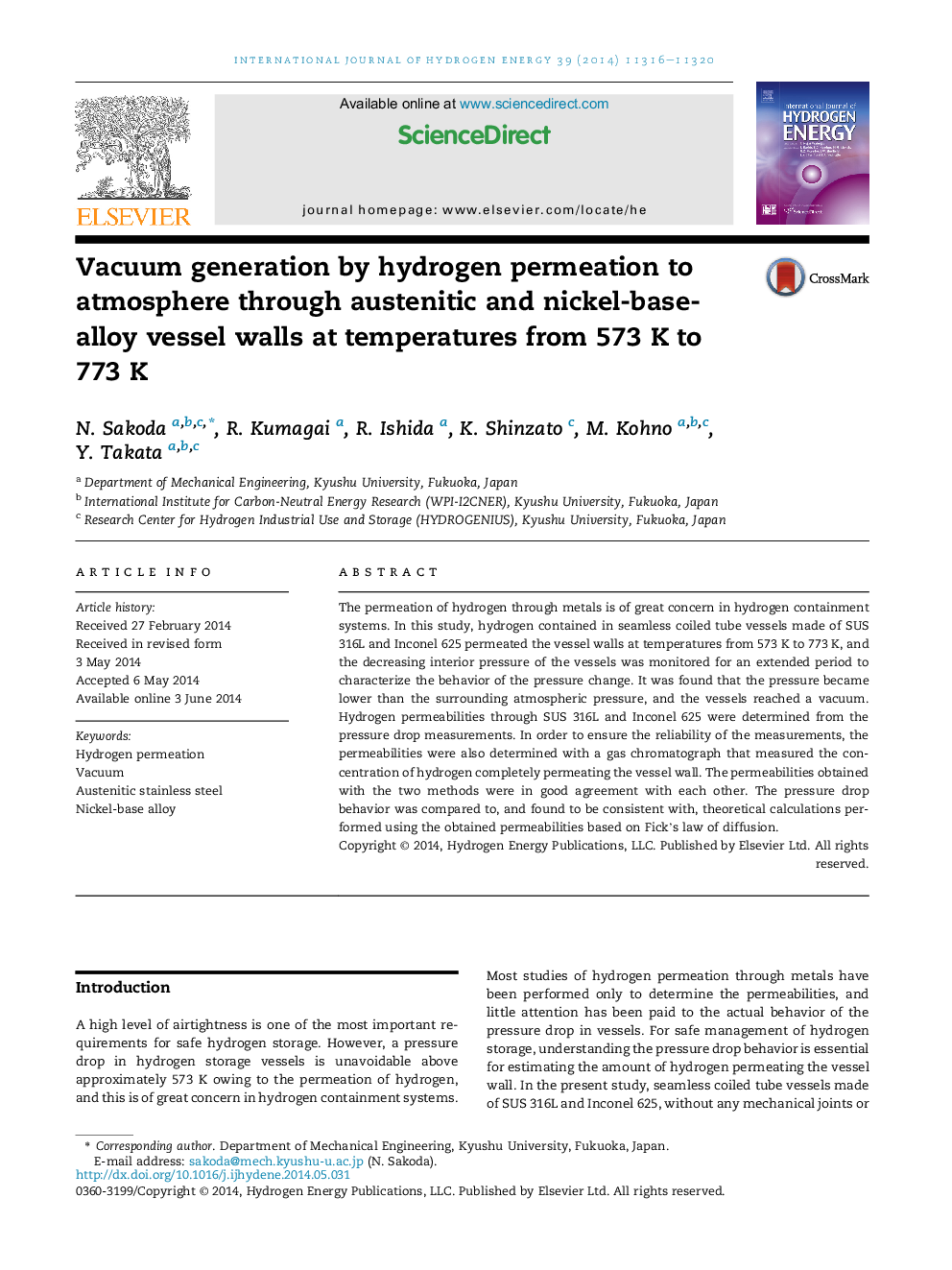| Article ID | Journal | Published Year | Pages | File Type |
|---|---|---|---|---|
| 1272273 | International Journal of Hydrogen Energy | 2014 | 5 Pages |
•Vacuum was generated by hydrogen permeation to atmosphere through vessel walls.•Pressure behavior in vessels was consistent with theoretical calculations.•Hydrogen permeabilities through SUS 316L and Inconel 625 were determined.
The permeation of hydrogen through metals is of great concern in hydrogen containment systems. In this study, hydrogen contained in seamless coiled tube vessels made of SUS 316L and Inconel 625 permeated the vessel walls at temperatures from 573 K to 773 K, and the decreasing interior pressure of the vessels was monitored for an extended period to characterize the behavior of the pressure change. It was found that the pressure became lower than the surrounding atmospheric pressure, and the vessels reached a vacuum. Hydrogen permeabilities through SUS 316L and Inconel 625 were determined from the pressure drop measurements. In order to ensure the reliability of the measurements, the permeabilities were also determined with a gas chromatograph that measured the concentration of hydrogen completely permeating the vessel wall. The permeabilities obtained with the two methods were in good agreement with each other. The pressure drop behavior was compared to, and found to be consistent with, theoretical calculations performed using the obtained permeabilities based on Fick’s law of diffusion.
